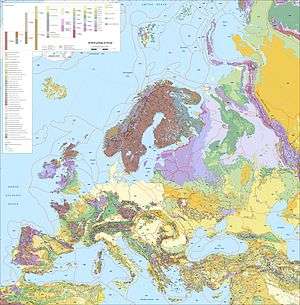Hallandian-Danopolonian event
The Hallandian-Danopolonian event was an orogeny and thermal event that affected Baltica in the Mesoproterozoic. The event metamorphosed pre-existing rocks and generated magmas that crystallized into granite.[1] The Hallandian-Danopolonian event has been suggested to be responsible for forming an east-west alignment of sedimentary basins hosting Jotnian sediments spanning from eastern Norway, to Lake Ladoga in Russia. The alignment of subsidence is thought to correspond to an ancient back-arc basin parallel to a subduction zone further south.[2]
References
- ↑ Bingen, Bernard; Andersson, Jenny; Söderlund, Ulf; Möller, Charlotte (2008). "The Mesoproterozoic in the Nordic countries". Episodes. 31 (1): 29–34.
- ↑ Lundmark, Anders Mattias; Lamminen, Jarkko (2016). "The provenance and setting of the Mesoproterozoic Dala Sandstone, western Sweden, and paleogeographic implications for southwestern Fennoscandia". Precambrian Research. 275: 197–208.
This article is issued from Wikipedia - version of the 8/29/2016. The text is available under the Creative Commons Attribution/Share Alike but additional terms may apply for the media files.
